Those who live more than 6 hours a day are 40% more likely to die than society.
Learning how to sit properly can help you stay healthy and safe, no matter where you sit.
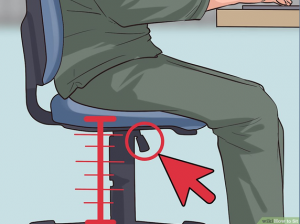 Push your hips back to the chair as far as they can go. The best way to sit in office chairs is to get your hips back as far as they go, allowing your back and shoulders to support the shape, and then adjust the other components of the chair to provide support. If you are sitting on a flat and sturdy chair, drag your hips to the back edge of the chair and sit with your back against the curvature of the chair. Sit with your back and shoulders as if supporting the back of the chair. If you are sitting on a chaise lounge or armchair, it is important to keep your feet straight on the floor and your back straight. Your shoulders should be back and you should go as far as possible.
Push your hips back to the chair as far as they can go. The best way to sit in office chairs is to get your hips back as far as they go, allowing your back and shoulders to support the shape, and then adjust the other components of the chair to provide support. If you are sitting on a flat and sturdy chair, drag your hips to the back edge of the chair and sit with your back against the curvature of the chair. Sit with your back and shoulders as if supporting the back of the chair. If you are sitting on a chaise lounge or armchair, it is important to keep your feet straight on the floor and your back straight. Your shoulders should be back and you should go as far as possible.
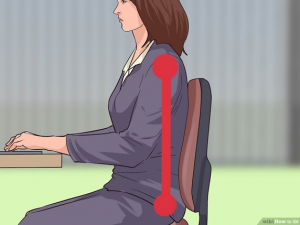
If you are going to sit longer, move back and forth if possible. This helps keep the body active and balanced.
 Adjust the height of your seat to suit your body. The seat of your chair should be high enough so your feet are on the ground. If your chair is too low, you can strain your neck, if you sit too long, your shoulders may tire over time. If you need to adjust your seat higher, you may find that your feet do not reach the floor comfortably. In this case, try to put a stool, cushion or other object under your feet.
Adjust the height of your seat to suit your body. The seat of your chair should be high enough so your feet are on the ground. If your chair is too low, you can strain your neck, if you sit too long, your shoulders may tire over time. If you need to adjust your seat higher, you may find that your feet do not reach the floor comfortably. In this case, try to put a stool, cushion or other object under your feet.
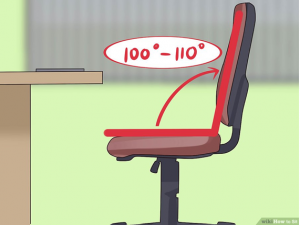
Adjust the back of the seat at a recumbent angle of 100 ° -110 °. Ideally, the back of the fixed chair should not be perfectly straight, ie angled back up to 90 °. This would be much more comfortable and supportive for your back than a perfectly flat backrest.
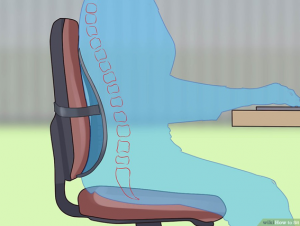
Make sure your upper and lower back are supported. A good chair should offer a slightly protruding lumbar support on the lower back to support your lower back on both sides so that you can stand comfortably and upright. But if this kind of support isn’t available, you have to do it yourself. If necessary, use inflatable cushions or small pillows between the back of the chair and your spine, just above the hips. This will be much more comfortable. If your chair has an active back mechanism, adjust your chair slowly and make frequent changes in position, swing back and forth while sitting and working to keep your back from being motionless.
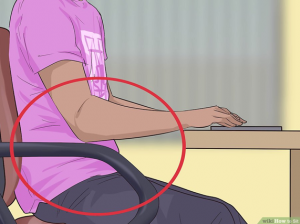
Adjust the armrests. Ideally your armrests should be adjusted so your shoulders and even your wrists are comfortable if you’re typing. For more specific suggestions on sitting at the computer, read the next section. Alternatively, you can remove the armrests if they are bothering you. Armrests are not required for support.
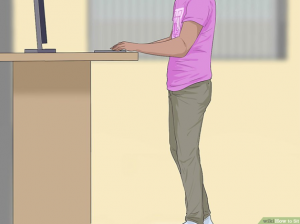
If possible, sit in an active chair. Sitting for long periods of time in an office environment leads to an increasing risk of serious health problems, including back and shoulder, as well as heart disease. For this reason, active sitting methods are more popular than ever and may be a good option for you. Instead of using the chair as a resting place, active seating devices such as high tables, chairs that allow you to bend your knee, and other ergonomic alternatives should be used that force your body to keep upright. Passive chairs, even ergonomic ones, may tend to force your spine into uncomfortably upright positions.
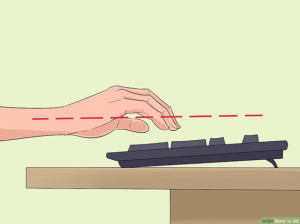
Adjust the height of the keyboard with your shoulders relaxed, elbows slightly bent away from your body, wrists and hands straight. To ensure the keyboard is comfortable, use the keyboard tray mechanism or the keyboard feet to adjust the tilt. If you sit in a forward or upright position, try moving your keyboard away from you, but if you reach out a little further, a slight forward tilt will help maintain a straight wrist position. Ergonomic keyboards rest in the center by allowing more natural wrist alignment allowing your thumb to point in the air rather than placing your palms on the ground. Otherwise, you will get wrist pain.
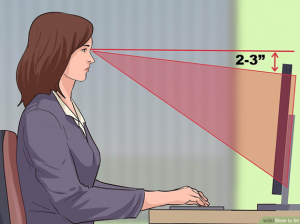
Set up the monitor and source documents accordingly. Ideally, if you want to keep your neck in a balanced, comfortable position, you don’t need to stretch your neck to see what you are working on. Center your monitor directly in front of your keyboard. Place the top of the monitor approximately 2-3 ”below your eye level when you sit down. If you are wearing bifocals, lower the monitor to a comfortable reading level.
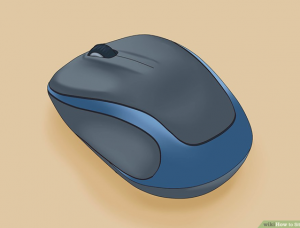 Pay attention to using a mouse in an ergonomic way. An ergonomic mouse keeps your wrist parallel to your body. Otherwise, this ensures that your wrist is at a natural resting state rather than parallel to the floor, which can lead to a carpal tunnel in many repetitions. The mouse pad and traditional mouse found in most laptops also do what the keyboard does: that is, it forces your wrists into an unnatural position, and this can cause carpal tunnel problems and chronic pain over time.
Pay attention to using a mouse in an ergonomic way. An ergonomic mouse keeps your wrist parallel to your body. Otherwise, this ensures that your wrist is at a natural resting state rather than parallel to the floor, which can lead to a carpal tunnel in many repetitions. The mouse pad and traditional mouse found in most laptops also do what the keyboard does: that is, it forces your wrists into an unnatural position, and this can cause carpal tunnel problems and chronic pain over time.

Stay as active as possible in the workplace. If you work in an office, you should get up and move at regular intervals to avoid stress pain and long-term damage to your arms, neck, shoulders and back.